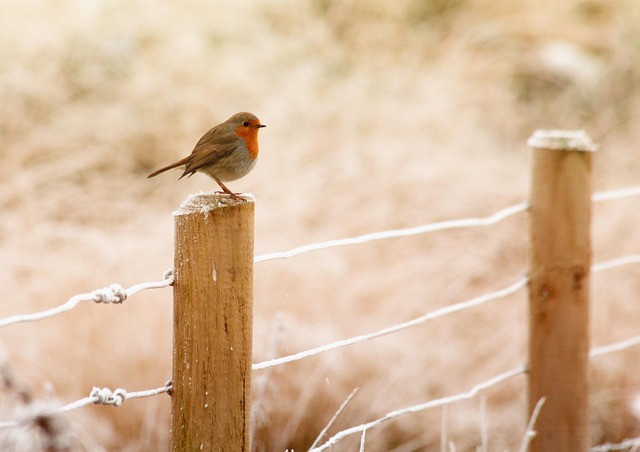Coastal areas present unique challenges for fencing due to harsh weather conditions and exposure to salt water. This article explores durable wooden fencing as a sustainable and aesthetically pleasing alternative for these environments. We delve into the specific needs of coastal fencing, highlighting benefits like resistance to rot and decay. Understanding the right wood species, installation tips tailored for coastlines, maintenance strategies, and design possibilities will guide homeowners in choosing the perfect wooden fence to withstand the elements while enhancing their coastal landscape.
- Understanding Coastal Fencing Challenges
- Benefits of Durable Wooden Fencing
- Choosing the Right Wood Species
- Installation Considerations for Coastlines
- Maintenance and Longevity Secrets
- Enhancing Coastal Aesthetics with Wood
Understanding Coastal Fencing Challenges
Coastal areas present unique challenges for fencing due to their harsh, often corrosive environments. Saltwater, strong winds, and frequent storms can significantly wear down traditional fencing materials. Wood, in particular, requires careful consideration when exposed to these elements. The primary challenge lies in selecting a wood species that offers both durability and aesthetic appeal to withstand coastal conditions.
Additionally, installation considerations are crucial. Proper grounding and anchoring techniques are essential to prevent fencing from being torn away by strong winds. A well-designed fence should also incorporate features like water runoff systems to avoid moisture buildup, which can lead to rot and structural damage over time. Understanding these challenges is the first step towards choosing the right durable wooden fencing solution for coastal properties.
Benefits of Durable Wooden Fencing
Durable wooden fencing offers numerous advantages for coastal areas. Firstly, it provides natural protection against strong winds and salty air, which are common challenges along the coast. Unlike other materials that might degrade or corrode under such conditions, treated wood can withstand these elements, ensuring a longer lifespan and maintaining its structural integrity.
Additionally, wooden fences create a visually appealing landscape feature, adding warmth and character to coastal properties. They seamlessly blend with natural surroundings, enhancing the overall aesthetic appeal of beachfront homes or public spaces. Furthermore, these fences can be custom-designed and painted to match specific colour schemes, allowing homeowners and designers to express their unique style while maintaining functionality and durability.
Choosing the Right Wood Species
When selecting wood for coastal fencing, understanding the local climate is key. Saltwater exposure, high humidity, and frequent storms can accelerate wood decay. Opting for rot-resistant hardwoods like redwood or cedar is a wise choice as they naturally resist moisture absorption and fungal growth. These species not only withstand harsh weather but also maintain their beauty over time, making them ideal for coastal areas.
Additionally, considering the wood’s natural oils and resins can further enhance its durability. Some woods have inherent protective properties that deter insects and prevent water penetration. By choosing the right species tailored to your coastal environment, you ensure a robust and long-lasting fence that can brave the elements year-round.
Installation Considerations for Coastlines
When installing durable wooden fencing in coastal areas, several unique considerations come into play due to the region’s specific challenges. The harsh marine environment requires specialized installation techniques to ensure long-lasting performance and protection against corrosive salt air, strong winds, and potential flooding. One crucial aspect is proper site preparation, which involves addressing any existing soil issues and ensuring adequate drainage to prevent water accumulation around the fence posts.
Another essential factor is choosing the right materials and construction methods. Treated wooden posts and rails with a high-quality waterproof barrier can significantly extend the fence’s lifespan. Additionally, using concrete or metal anchors for posts instead of traditional burial can help them withstand extreme weather conditions and potential coastal movement. Regular maintenance, including inspection and re-treatment as needed, is vital to keeping the fencing in top condition in this demanding environment.
Maintenance and Longevity Secrets
Maintaining durable wooden fencing in coastal areas requires a thoughtful approach to protect against harsh weather conditions, salty air, and potential pest infestations. Regular cleaning with fresh water and mild detergent can help remove salt buildup and maintain the wood’s natural beauty. A thin layer of high-quality sealant applied annually will create a protective barrier against moisture and UV rays, ensuring the fence remains robust and vibrant.
Longevity secrets for coastal wooden fencing include choosing rot-resistant wood species like cedar or treated pine, which are naturally resistant to decay. Additionally, proper drainage systems and regular inspection can prevent waterlogging and identify potential issues early on. Coating the fence with a corrosion-resistant hardware and using stainless steel fasteners further enhance durability, minimizing maintenance needs over time.
Enhancing Coastal Aesthetics with Wood
Wooden fencing can significantly enhance the coastal aesthetic, offering a natural and harmonious blend with the surrounding environment. Unlike concrete or metal alternatives, wood possesses a warmth and texture that visually connects residents to the area’s unique character. The subtle variations in grain patterns and color tones mimic the surrounding beaches, dunes, and sea, creating an overall more inviting and aesthetically pleasing landscape.
By choosing durable wooden fencing designed for coastal conditions, homeowners can embrace both functionality and beauty. This type of fencing is treated to withstand harsh weather, including salty air and regular exposure to moisture, ensuring longevity and maintaining its appealing natural look for years to come.
